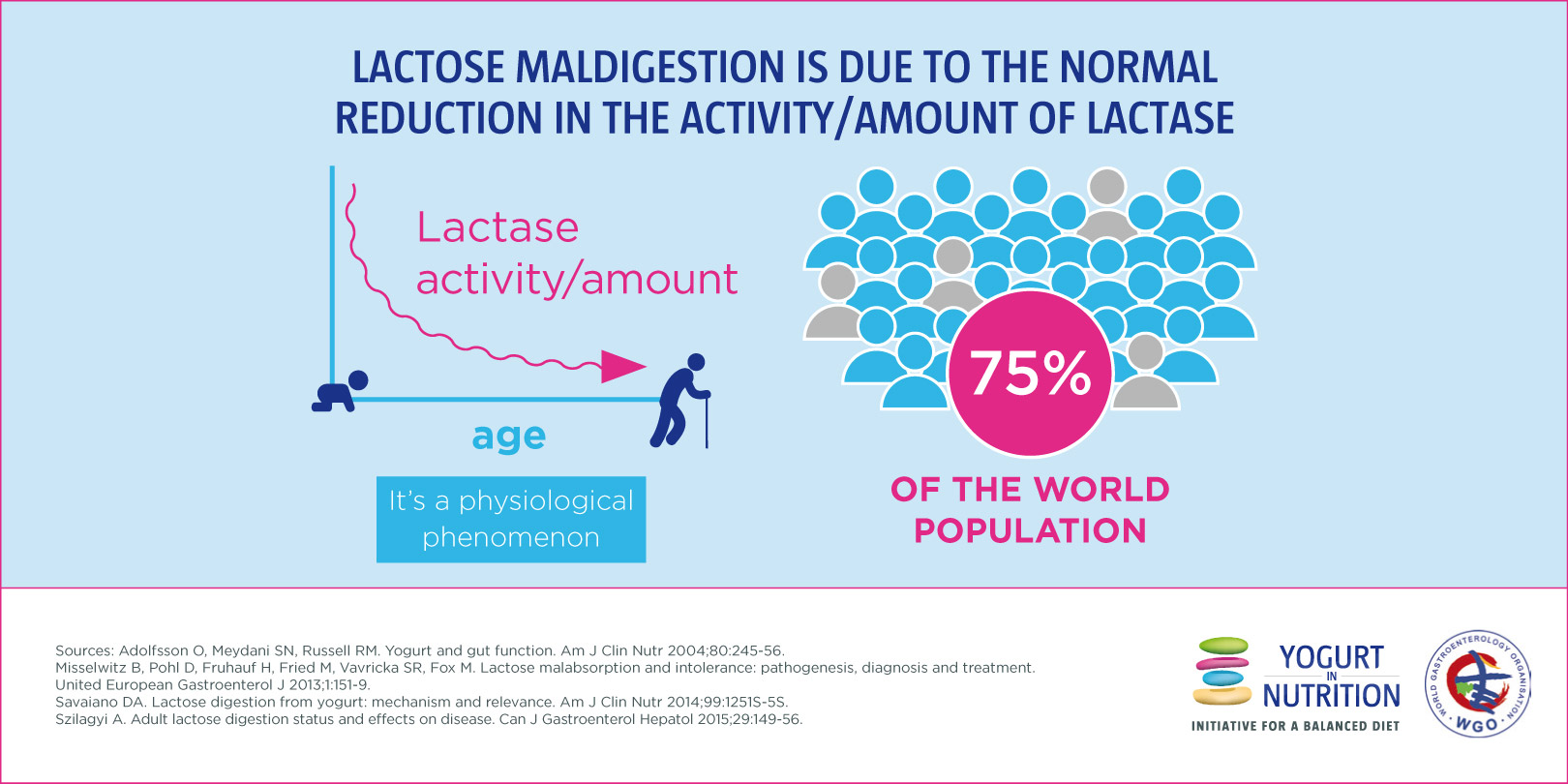Lactose intolerance concerns very few people while lactose maldigestion concerns 70-75% of the world population. There is a difference between these two situations.
Lactose maldigestion is due to the normal incapacity of our intestine to transform lactose into glucose and galactose, both simpler sugars used by our body for energy and various functions. Lactose intolerance however is lactose maldigestion that results in one or many symptoms of intestinal discomfort such as bloating, diarrhea, and gas.
Lactose maldigestion appears after weaning, when the activity of lactase begins to naturally decline. Lactose maldigestion varies between different populations and on whether dairy products are consumed during adulthood. Lactase activity decline is more common in people of Asian, African, South American, Southern European, and Australian Aboriginal heritage than in people of Northern European (Scandinavia, the British Islands and Germany) descent. Total lactase deficiency is rare (less than 50 patients in the world, mainly in Finland). It is a genetic disorder called congenital lactase deficiency. The severity of symptoms depends on the degree of lactase deficiency and they usually include nausea, abdominal cramps and bloating, vomiting, flatulence, diarrhea, dehydration, loose stool, metabolic acidosis, the presence of lactose in urine and a distended abdomen. Lactose-free diet is only needed for the rare patients with congenital lactase deficiency.
For lactose intolerants and maldigesters, avoidance of milk and dairy products could have health consequences. Small amounts of lactose can still be consumed without triggering any symptoms. The consumption of yogurt, which contains live bacteria that help digesting the lactose it contains, and of cheeses that contain low or no lactose is possible and even encouraged (cheddar, provolone, mozzarella, Grana padano, etc.).





